Gaming PC purchasing advice: how to choose the right product
- What you need to know
- Gaming PCs are particularly powerful computers designed for high-end gaming.
- A gaming console, on the other hand, is always a compromise between price and performance in order to make the devices suitable for the masses.
- With a gaming PC, the players themselves determine how powerful the hardware should be.
- Should the technology no longer be up-to-date, the hardware can be updated according to the user’s preferences; consoles don’t have this option.
- A gaming PC can do everything a console can do—but even more and better.
- For smooth gameplay, the CPU, graphics card and RAM in particular should have above-average performance and adequate cooling.
- In addition to high-end gaming, such a gaming PC can also be used for office work and demanding tasks such as photo editing, video editing and 3D modelling. Yet another advantage over a console.
Benefits of a gaming PC
A modern gaming computer is the cockaigne for all those who love video games. A wide selection of game titles ensures long-lasting fun. Powerful graphics chips supply the matching gaming monitor with breathtaking Full HD or even 4K images. The landscapes in many game worlds are so beautiful that users won’t want to stop gaming. If individual components become outdated and no longer fully meet the requirements of modern game titles, the biggest advantage of a gaming PC is that the owner can replace individual hardware parts with newer ones.
Initially, it is advisable—especially for those who aren’t technophiles—to buy a pre-assembled gaming computer that meets their wishes and requirements and is ready for immediate use. If this then reaches its limits after a certain period of use, for example because newer game titles require even more graphics or computing power to enable a smooth gaming experience without streaks, gamers have several options to become do something about it. This case can occur two to five years after purchase, depending on their aspirations.
Gamers can then commission a specialist to replace individual hardware components or buy components and insert them into the existing case themselves. The option of upgrading outdated hardware to modern technology is a great advantage that PC users have over console gamers.
Whether from a specialist or on your own: Either way, users can easily upgrade the processor, RAM or the graphics card to the latest state of the art. In this way, the gaming computer achieves even faster loading times and supports higher resolutions. Users can choose from a huge pool of different hardware manufacturers who offer products with a wide range of performance and an equally wide price range. So unlike a games console, gamers are not limited to a particular hardware manufacturer.
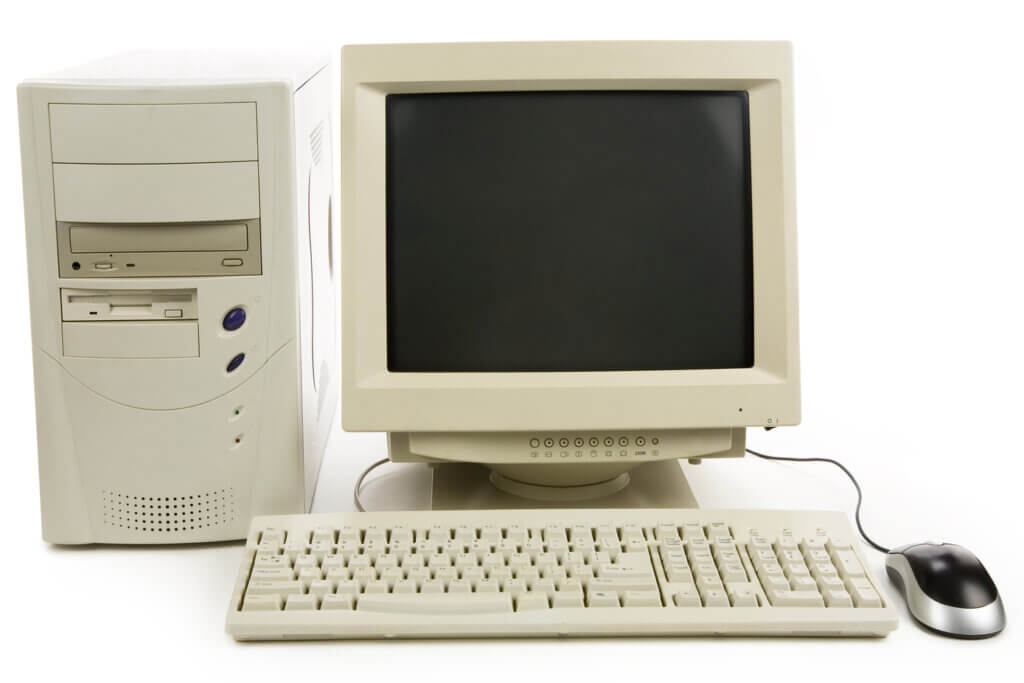
However, it is important that the hardware matches, both in terms of interfaces and performance. If the interfaces are different and incompatible, it is not possible to use them at all. If one component outperforms the others by far, it will be slowed down by the least powerful one. Therefore, the individual components should belong to approximately the same performance class. Potential buyers who do not dare to do such research are better off choosing a pre-configured system.
Such a refurbishment is usually not possible with game consoles: they are closed systems in which all components are matched to each other. The system may not recognise components by third parties, so it cannot integrate them. In addition, the manufacturer’s warranty expires if owners make changes to their device. They have to wait for the next generation of consoles and have no way to reuse components from their outdated consoles.
All in all, a computer trimmed for gaming therefore much more comfortable: the loading times between the individual game sections are shortened, which means less waiting time for the user. Switching from Full HD to 4K resolution means a quadrupling of the pixels displayed, and thus a disproportionately higher level of detail, which has a positive effect on the overall experience. For such a brilliant picture, however, in addition to the computer, a corresponding monitor or TV is also necessary that allows the display of these resolutions.
Although some consoles can now keep up in terms of resolution, what makes a gaming computer is the freedom of the user: in addition to the choice of components, they can also freely choose from a range of peripherals such as keyboards, mice, gamepads, steering wheels, VR headsets and webcams from different manufacturers. With the console, they are often locked into a given control device. The same applies to communication tools such as chat programmes: While the computer user is free to choose, the console manufacturers specify which programmes can be used. Usually, the choice is limited by the device’s own app store.
Another argument in favour of gaming computers: for many games, so-called mods, i.e. game modifications, which are often free and created by hobby game developers, are available for already released computer games. They help to increase the popularity, quality and longevity of a game title. For consoles, on the other hand, often only manufacturer mods are available for a fee. These are also called downloadable content (DLC).
Exclusive game titles on the PC
Another important reason for buying a gaming computer is the fact that some titles are only available for Windows PCs. Owners of a game console and users of other operating systems are left out in the cold: they have no way of getting the game to run on their devices. A gaming computer usually runs the latest version of Windows and thus meets the requirements. Below we list a selection of popular games that only reached Windows users.
- Anno 1800 (2019)
- Age of Empires: Definitive Edition (2018)
- Quake Champions (2018)
- Classics like World of Warcraft (2005)
The most important components
Computers that are mainly used for gaming need a number of powerful components. In the following, we present the individual parts, go into their function and give a brief overview of variations available on the market.
The mainboard: control centre for all data streams
The mainboard, also called motherboard, is the foundation on which the gaming PC is built. Power is distributed from the power supply unit to the individual components via the various interfaces that a mainboard has. It also controls the exchange of data between components such as hard disks, graphics card, CPU and RAM. When choosing the right mainboard, interested parties must pay attention to several factors.
The mainboard must have a suitable socket for the desired processor. This already limits the choice slightly. In addition, there are various sizes, which in turn must fit into a selected housing. The rule of thumb is: if possible, use a larger mainboard model. Large mainboards naturally offer more space for interfaces than smaller models. Moreover, the individual interfaces usually have a greater distance from each other. This can be an advantage if you want to use large components such as high-end graphics cards. If, on the other hand, you opt for a smaller mainboard, you could face the problem that your components interfere with each other and do not find enough space on the board. The choice of mainboard determines the component interfaces – users should pay attention to this, first choose a mainboard and then the matching components, which we present below.
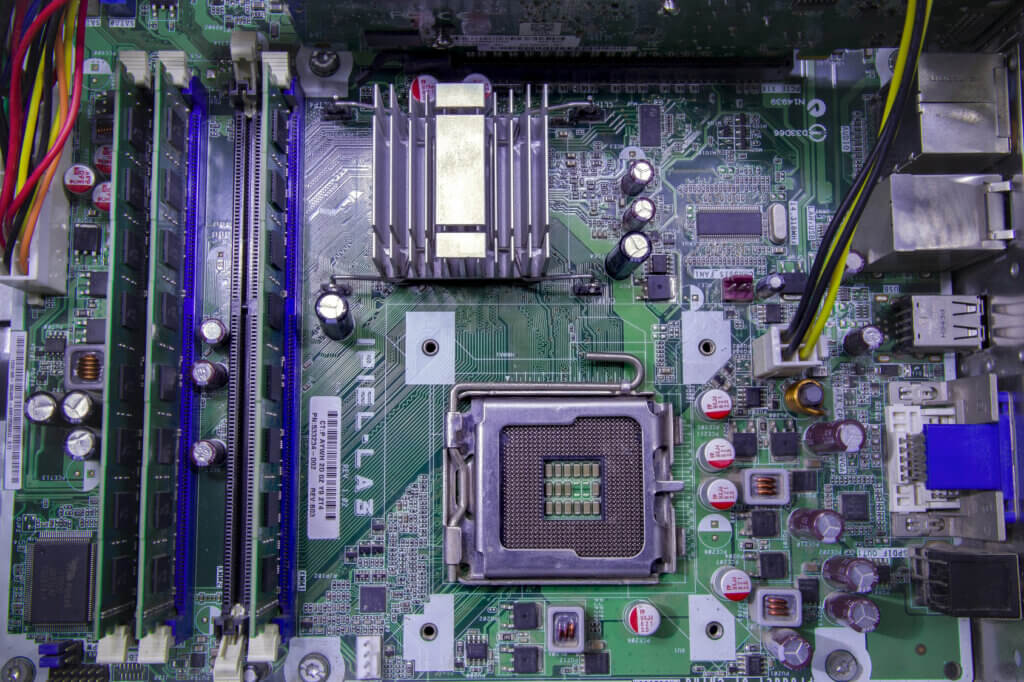
The processor: the control centre for all computing operations
The processor, also known as the CPU (Central Processing Unit), forms the control centre of a computer. It processes the data sent by the other hardware components.
Single- vs. multi-core processor
Traditionally, one processor core was installed in processors. In the meantime, however, technology has advanced to the point where several processor cores are installed in one CPU. In this case, it’s called a multi-core processors. According to this definition, dual-core processors house two cores, quad-core systems four, and octa-core solutions even eight. Visually, such a multi-core processor cannot be distinguished from a single-core variant. In computer operation, the individual cores are treated as multiple computing units. The result is that users can perform several computing operations at the same time. In the high-end gaming sector, single-core processors no longer play a role.
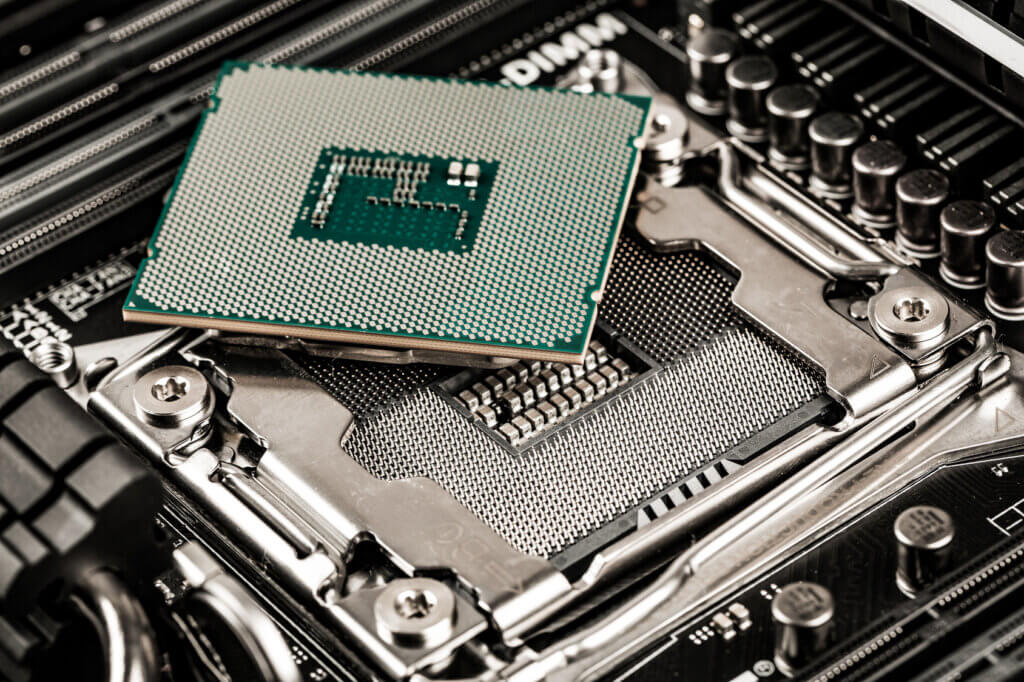
A multi-core processor therefore usually means a significant increase in performance; the more cores a processor has, the more powerful it usually is (the performance of each individual core is of course also decisive). How big the performance increase is, however, also depends on whether software supported by this hardware is able to address several of the cores simultaneously. Another decisive factor is whether the user has a 32- or 64-bit operating system.
32- and 64-bit architecture in operating systems
Processor architecture refers to the structure of a processor core. In earlier Windows operating systems, such as Windows XP, the 32-bit architecture was primarily used. This design is associated with certain limitations. For example, the operating system architecture can only process four gigabytes of RAM. With 64-bit processors, which found their way into gaming PCs from Windows Vista onwards, the main advantage is the increased address range, i.e. the size of the RAM that can theoretically be addressed: With 64-bit systems, it amounts to 16 exbibytes of RAM, which is far above the memory sizes available for high-end gaming. Gamers benefit from this increased range because larger amounts of data can be processed simultaneously by several CPU cores. This shortens loading times, for example, and prevents in-game glitches when generating the game world.
Two chip manufacturers are competing for the favour of customers on the market: Intel and AMD. In the following, we present the different product ranges of the two suppliers. Beforehand, however, it can already be stated that it should be at least a quad-core processor with a clock speed of three, better four gigahertz.
Intel processors
The US chip manufacturer Intel markets its current processors as the Intel Core i series. The manufacturer divides its processor range into four performance classes: i3, i5, i7 and i9. The higher the class number, the more power the chip delivers. This is also reflected in the purchase price. However, the classification into a category alone does not help:
An i5 processor with a high model number may be more powerful than an i7 processor with a low model number. Category numbers 3 to 9 are followed by a model designation consisting of four numbers. In the example of the i7-4770, it means that it is a powerful fourth-generation i7 processor. The remaining three digits, 770, stand for the model designation. For users, this means: the higher the numbers, read successively from left to right, the more powerful the processor.
AMD processors
AMD-branded computer processors have caught up strongly in recent years and are now once again absolutely competitive with Intel chips. The chip series for gaming computers that is comparable to the Intel Core processors is called Ryzen. Analogous to Intel, the manufacturer designates the CPUs with the category names Ryzen 3, Ryzen 5 and Ryzen 7. The competitor model to Intel’s Core i9 in the high-price segment is called Threadripper by AMD. Here, too, the category numbering is followed by a four-digit model designation, such as AMD Ryzen 7 2700, where 2 also stands for the second generation and 700 for the model designation. By naming its processors, AMD deliberately positions them for better comparability with the competition from Intel.
In addition, AMD offers low-priced processors for the entry-level and lower mid-range with its low-cost FX series. These are suitable for users who play older games without wanting to use the maximum graphics settings. These economical alternatives are not suitable for newer adventure games or shooters with 3D graphics and full HD or 4K graphics. In addition, the architectures used are usually outdated and it becomes increasingly difficult to find suitable hardware such as mainboards or RAM modules over time.
Which processor manufacturer is ‘better’?
This question is not so easy to answer. With earlier models from the manufacturer AMD, a direct comparison with Intel was hardly comprehensible for end consumers because different clock rates were used. Since the Ryzen model series, this is no longer the case. In addition, AMD has caught up strongly. Which manufacturer supplies the better CPU is often a question of faith. Both suppliers have a loyal following that swears by their respective products. Soberly and objectively, a different processor is recommended for each application and each user. So-called benchmark tests simulate a wide variety of accesses, such as office tasks, video editing and gaming. The performance figures determined for the various categories make it possible to compare the individual models very well. In this way, every user can find the right product. For the average gamer, processors of the 3 series are out of the question. They should therefore opt for a current 5- or 7-series model from Intel or AMD. The processors of the 9-series (Intel) or AMD’s Threadripper processor are currently still comparatively expensive. They are therefore primarily suitable for enthusiasts who do not want to compromise on performance. What is more, the other components of such a high-performance system must also be correspondingly high-performance in order to let the fast processor fully come into its own.
Graphics card: The heart of graphics splendour
Next to the processor, the graphics processing unit (GPU) plays the most important role in calculating data in games. If the graphics card, as the heart of graphics performance in the network of PC components, is not powerful enough, it forms a particularly decisive – and possibly particularly narrow – bottleneck in terms of performance. The main memory installed in the graphics unit is also of crucial importance. In this segment, users have a choice between two different suppliers. Nvidia and AMD. We present the general differences between the cards of the two competitors below.
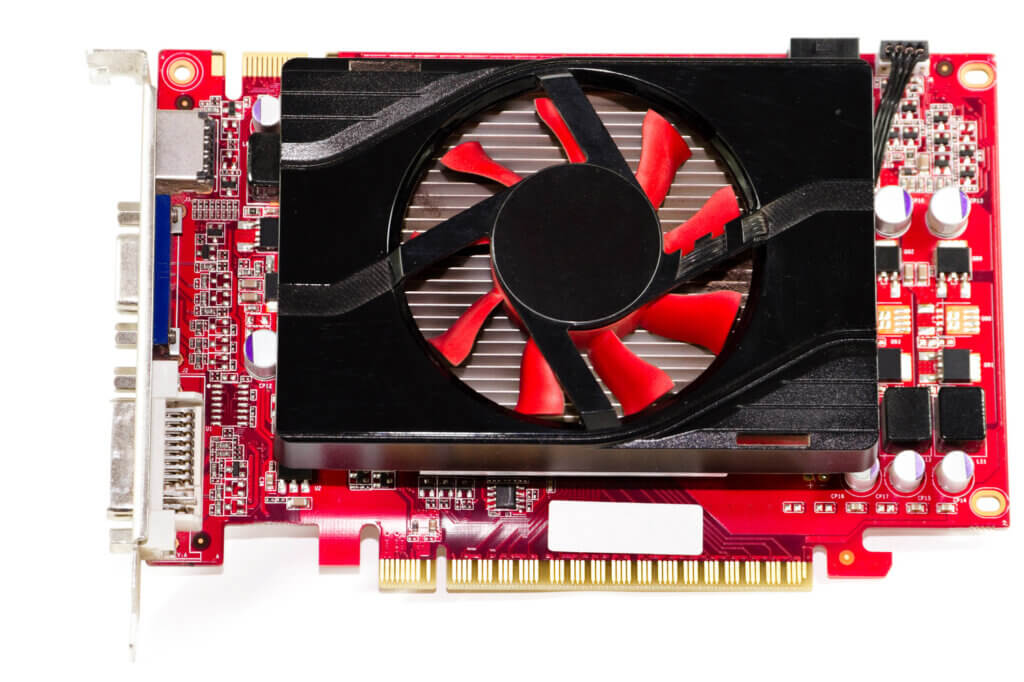
Nvidia GeForce series
The GeForce graphics cards from the manufacturer Nvidia have been established for years. Here, interested parties will find powerful mid-range to high-end graphics modules. Especially in the high-end sector, the Nvidia models are leading; AMD currently cannot match this performance with its models. On the other hand, the powerful GPUs are comparatively expensive. They can quickly cost over 1,000 euros and more. Of course, there are still cards available for the broad mass of users that cost around 250 to 300 euros.
AMD Radeon series
In 2006, the US chip developer AMD took over the Canadian graphics and chipset specialist ATI, which had successfully established the Radeon graphics card series on the market. Especially in the entry-level and middle class, the US competitor of Nvidia offers an unrivalled price-performance ratio. Interested parties who do not want to play at the highest resolutions and for whom a moderate setting is sufficient when playing games in Full HD get good performance here at a low price. The manufacturer has caught up strongly technologically in recent years and could also become fully competitive in the high-performance sector in the near future.
Main memory: for fast access times
The main memory serves as the computer’s DeepL access memory, into which all the programmes that are currently being executed, their programme parts and the required data are loaded. This shortens the access time considerably compared to reading out a hard disk. One also speaks of RAM modules (random access memory). It is a volatile memory. This means that it empties completely when the device is switched off. Since the processor directly accesses this memory unit, its size and transfer speed directly influence the performance of the entire gaming computer. The access speed provides information about the time it takes for the individual data to be accessed.
The memory speed, on the other hand, specified in megahertz (MHz), determines the amount of data that can be read per second. In addition to this information, the memory size of the individual RAM bars is also important, which is usually between one and eight gigabytes. It is important because many applications occupy large amounts of the intermediate memory during operation; even surfing with many tabs open can cause processes to come to a standstill even if the 8 gigabytes are actually adequate.
Prospective buyers must always pay attention to which type of plug-in modules fit the mainboard in which they are to be inserted. There are now five different DDR SDRAM standards (Double Data Rate Synchronous Dynamic Random Access Memory standard).
Buyers must therefore refer to the description of the mainboard to find out which main memory components are compatible. Mixing DDR RAM versions, for example between DDR2 and DDR4, is not possible due to different voltages and partly different designs. A higher version number after the “DDR” describes a newer, faster model:
- DDR-SDRAM, 3.2 GByte/s
- DDR2-SDRAM, 6.4 GByte/s
- DDR3 SDRAM, 12.8 GByte/s
- DDR4 SDRAM, 17.0 GByte/s
- DDR5 SDRAM (from 2nd quarter 2019), 19.2 GByte/s
Mixing components of the same DDR RAM version from different manufacturers and memory sizes should first be carefully checked: The phenomenon can occur that the slowest component also throttles down the faster components to its speed. In this case, not all the memory space would be available.
Hard disk: The data storage device
In contrast to the main memory, users can store data permanently here. A general distinction is made between the classic HDD (Hard Disk Drive) and the more modern flash memory called SSD (Solid State Drive). However, hybrid storage as a combination of both types is also available.
Magnetic hard disk drive: proven and affordable technology
The hard disk drive (HDD) is a magnetic storage medium in which data is written to the surface of rotating discs. This type of storage medium has been used in private computers since the 1980s. Users install the operating system on this medium and store all programmes and data such as Office documents, photos or videos here. Previously with little storage space and comparatively expensive, hard disks with large storage capacities of a terabyte or more became increasingly affordable over time.
Therefore, these magnetic hard disks are still used in computer in laptop systems today. However, they have some disadvantages: There are now faster solutions, namely SSDs. In addition, magnetic hard disks are susceptible to physical damage due to wear or falls. The reason: this type of hard drive has moving parts such as magnetic disks, a write and read head with a motor, as well as mechanics that can be damaged. In the event of damage caused by a fall or motor failure, the data can only be reconstructed by specialists at great expense. In the worst case, all contents stored on the data medium are lost. It is therefore generally recommended – regardless of the type of hard disk used – to make regular data backups. You can either use an external hard drive, a USB stick or a cloud storage service for this purpose.
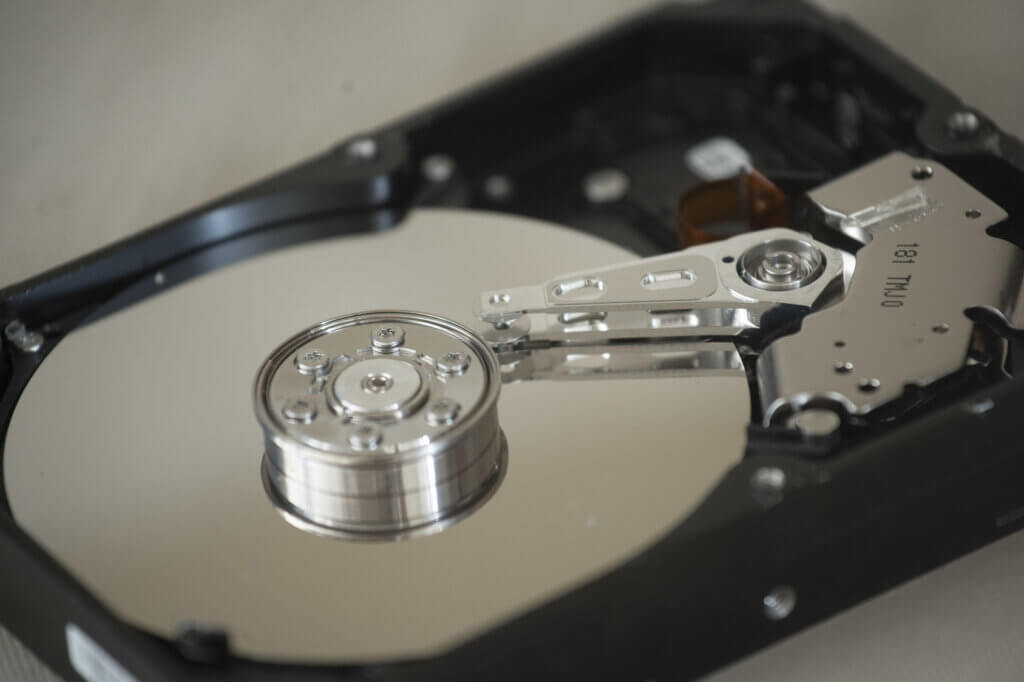
Pro points
- Large storage capacities at comparatively low prices
- Many read and write operations possible
Drawbacks
- Mechanical components susceptible to drop damage
- High space requirement in the PC housing
- Comparatively low read and write speed
SSD flash memory: compact and fast
SSD memories are compact flash drives. In their technology, they resemble a USB stick. In contrast to the classic magnetic hard disks, these flash memories no longer work with a read and write head, but access all memory areas, the individual cells, at the same speed. These individual areas can only be rewritten up to a limited number of times. Their maximum number of write operations is therefore lower than that of classic hard disks. Each time a file is written to its memory, the life of the SSD decreases. However, it has an access algorithm that protects against rapid wear. An SSD basically distributes new data evenly across its individual memory cells. All cells are used approximately the same number of times. Thus, a failure of individual, heavily used cells is unlikely.
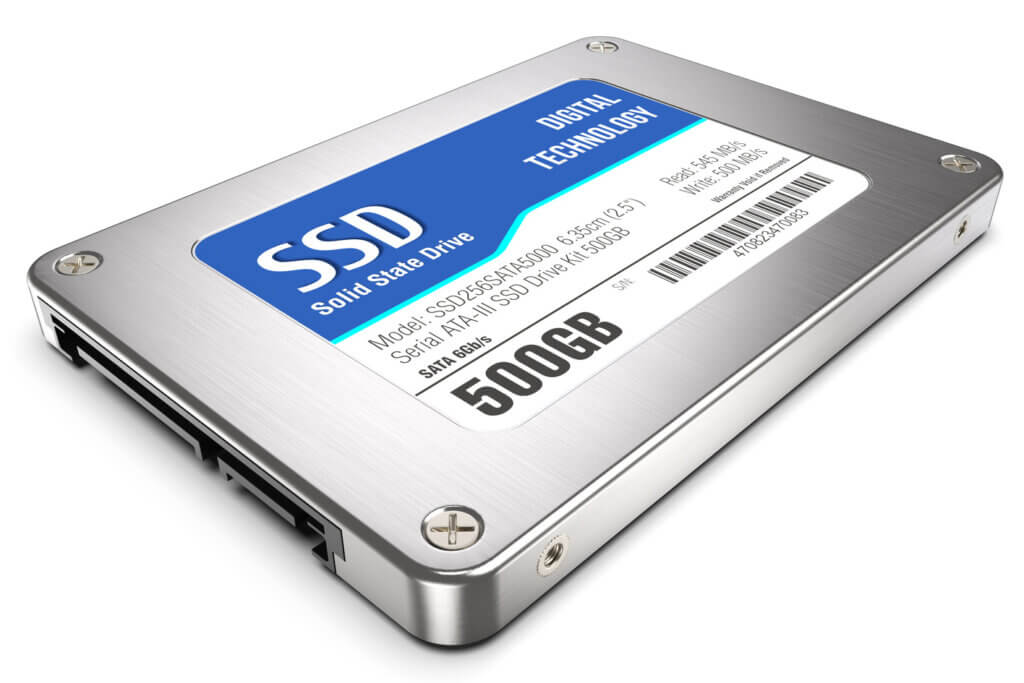
The great advantage of SSDs is that no write head has to “search” for the data as with a magnetic hard disk. This process can be illustrated with the search for the beginning of a track on a record: Here, the pick-up must be placed in exactly the right position in order to play the piece of music in its entirety. The read or write head of a magnetic hard disk must find the “beginning” of the file in the same way. SSD memories, on the other hand, directly address the memory cell and the file stored in it. This leads to a speed advantage. Due to their comparatively small size and lower susceptibility to physical impacts such as shocks and falls, SSDs are increasingly being installed in mobile devices such as laptops, tablets and smartphones in order to make the devices smaller and more robust.
Pro points
- Immobile components are less susceptible to shocks
- Comparatively high read and write speed
- Compact design
Drawbacks
- Fewer read and write operations possible than with a classic hard drive
- Large storage capacities still comparatively expensive
Hybrid storage: the advantages of both technologies combined
An SSHD (Solid State Hybrid Drive) combines a classic magnetic hard disk and a modern SSD memory. The storage space on the SSD part is comparatively small, while the space on the magnetic storage medium is large. The trick is that users install important system files such as the operating system or frequently used games on the SSD part. This significantly speeds up the system: Processes such as booting up and shutting down, but also system services and games are executed very quickly. Other data, such as infrequently used programmes and the potentially large archive of holiday photos and application documents, are stored on the HDD storage part, where there is significantly more space. System processes are processed particularly quickly in this way, games start promptly and loading times are reduced to a low, easily tolerable level. Access times, for example for holiday pictures, are less important, so they are stored on the slower part of the hard disk. This design ensures a good price-performance ratio. However, if a component of the composite is defective, users have to replace the entire module.
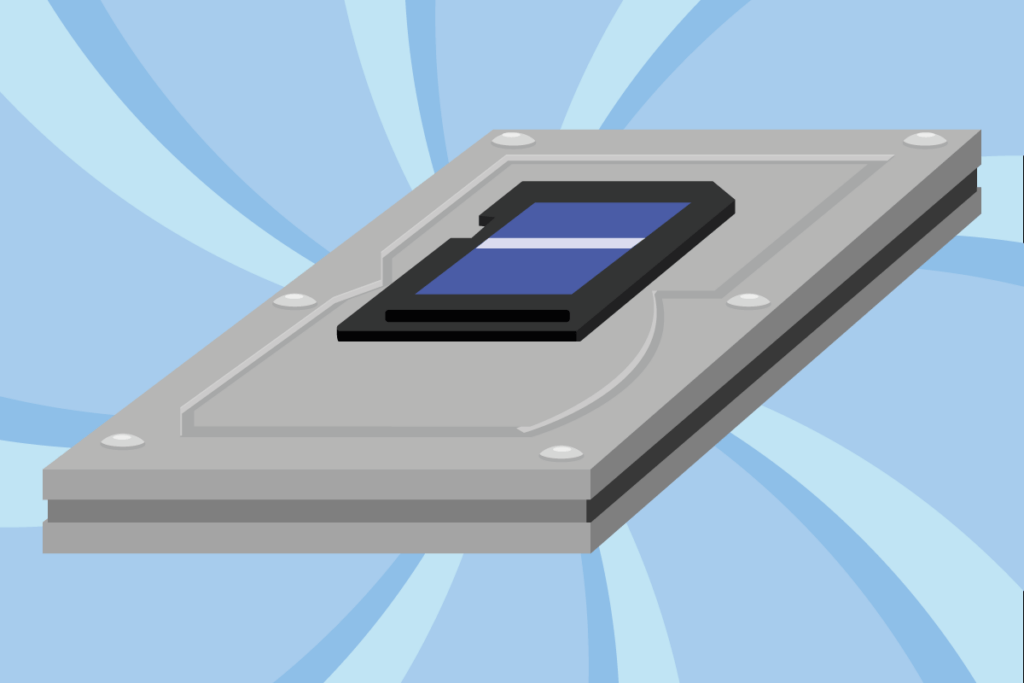
Pro points
- Good price-performance ratio
- Fast system
- Plenty of space for files like photos and videos
Drawbacks
- Replacement of the entire module necessary if one part is defective
Enclosure: Find space for all components
The computer casing is particularly important to many gamers: the first impression is decisive. Many therefore attach importance to shape and colour as well as special lighting elements, so that the computer has a viewing window made of Plexiglas on one side, for example, and provides an exciting insight into the inner workings. Noise-insulating materials that keep the computer’s operating noise in check are also popular. Above all, however, it is important that the case is the right size to accommodate the mainboard and all the components installed on it. There must also be threads to ensure that the motherboard is securely fastened. In addition, there must be sufficient space for cooling and ventilation. Some enclosures also have their own pre-mounted enclosure fans.
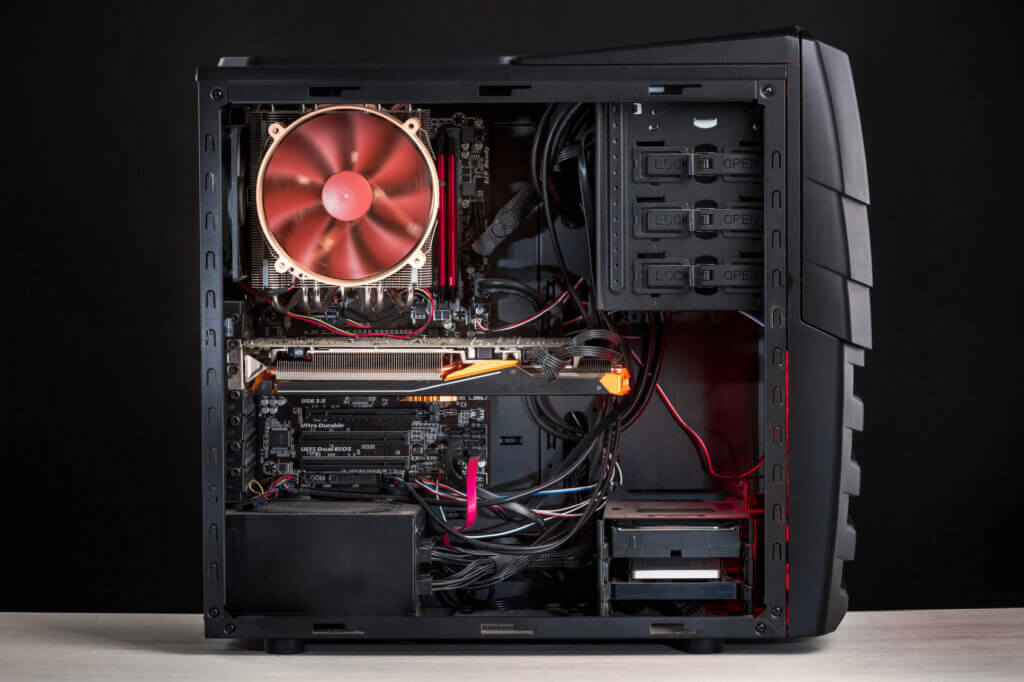
Fan and cooling systems: Prevent overheating
Components in gaming computers, especially the processor and the graphics card, emit a lot of waste heat. To prevent the components from getting too hot, a good cooling system is necessary. This can be an air or water cooling system. In the case of an air-cooling system, fans are used which, depending on the load of the components, discharge heated air from the enclosure or supply cool ambient air at adapted speeds in order to cool the components as they heat up. With powerful components and demanding applications, such as modern, high-resolution games, it can happen that these fans have to rotate very quickly in order to guarantee sufficient cooling. This can lead to a high noise level.
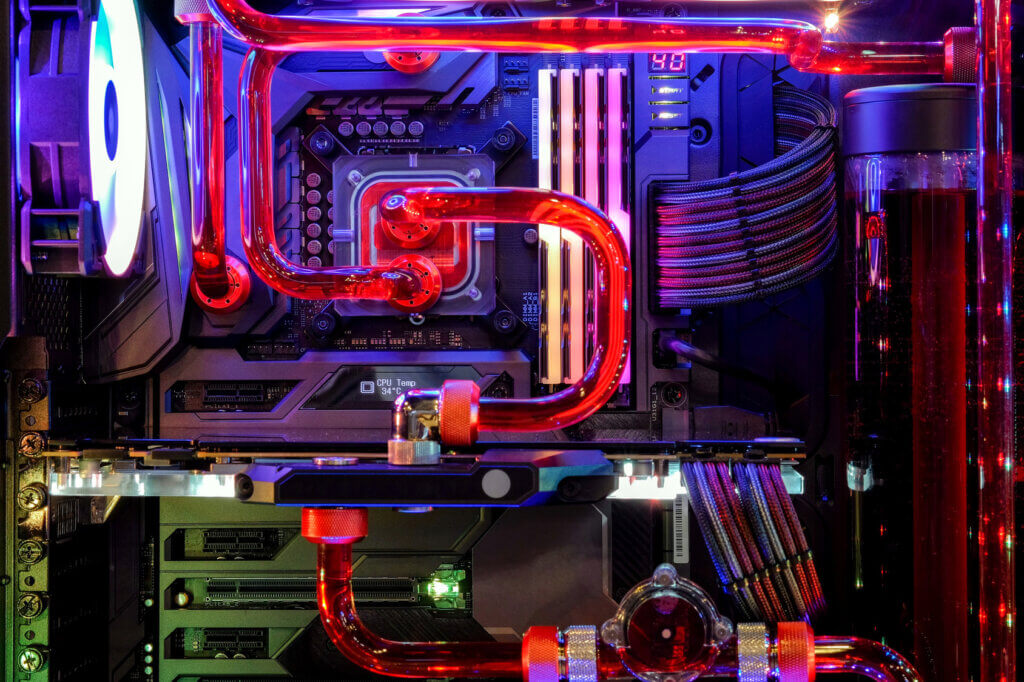
In some cases, however, air cooling is no longer sufficient: the components overheat. In order to avoid damage, the computer may interrupt the game in progress or shut down completely. It can only be switched on again when the components have cooled down. For gamers who are in the middle of a game, this is of course a disaster. The solution: water cooling. Here, the components are kept cool by a closed water circuit and a pump. Users can choose or design these systems in a colourful way. But be careful: inexperienced users should not install such a system themselves. In the event of a leak, there is a risk of liquid escaping and irreparable damage to the hardware.
Power supply unit: the power supply
The power supply unit is responsible for supplying the entire PC with power. It is connected to the mainboard, which distributes the energy to all hardware. Since gaming PCs often have energy-intensive high-end components, an ordinary office PC power supply is not sufficient. To ensure a sufficient power supply, a model with a total output of between 500 and 700 watts is recommended. Here, too, consumers should keep an eye on the noise level: in the meantime, many manufacturers offer specially insulated “silent” power supply units.
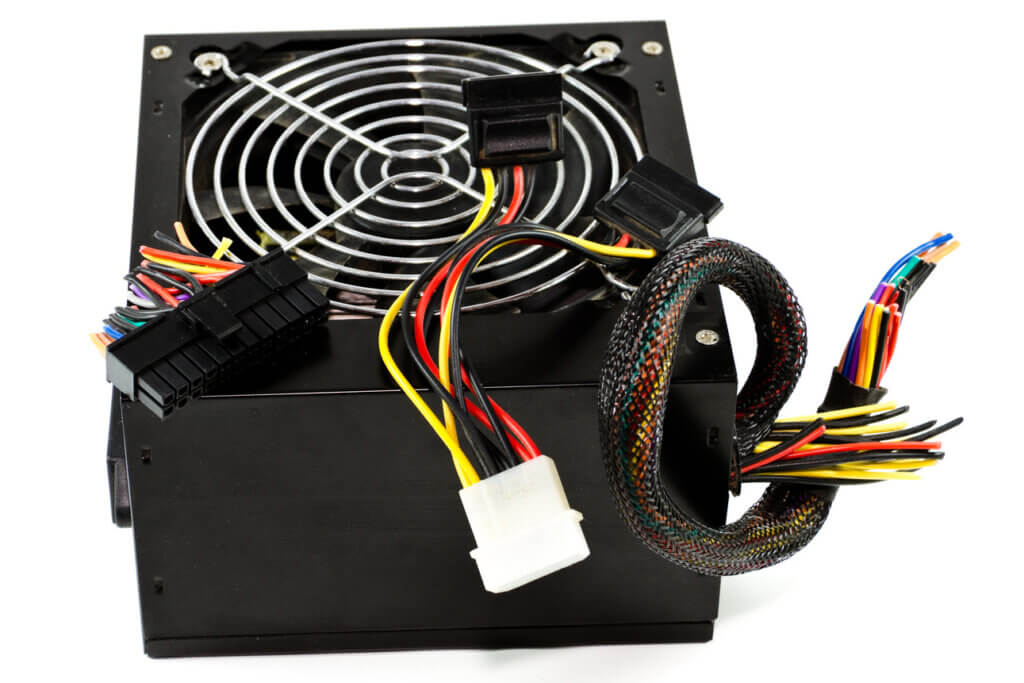
Power consumption
How much power a gaming computer consumes depends on the one hand on the basic power consumption of the installed hardware components, but on the other hand also on the actual computing effort that the components perform when processing demanding gaming titles. The wattage consumption under full load differs greatly from the consumption in idle mode, i.e. when the system is simply running without the hardware being stressed by computationally intensive software. While office programmes or surfing the internet hardly increase the performance and thus the power consumption, a game in full HD or even 4K graphics can increase the consumption to a total of 400 watts and more. When buying, gamers should make sure that the graphics card and processor are comparatively energy-efficient. Otherwise, there is a risk of nasty surprises when it comes to the annual electricity bill.
Connections: Type and number determine connectivity
A good gaming PC should have a certain number of modern interfaces so that owners can connect as many different peripheral devices as possible, such as monitors, mice, USB sticks or even a 3D printer. We present the most important connections.
DVI: digital image transmission
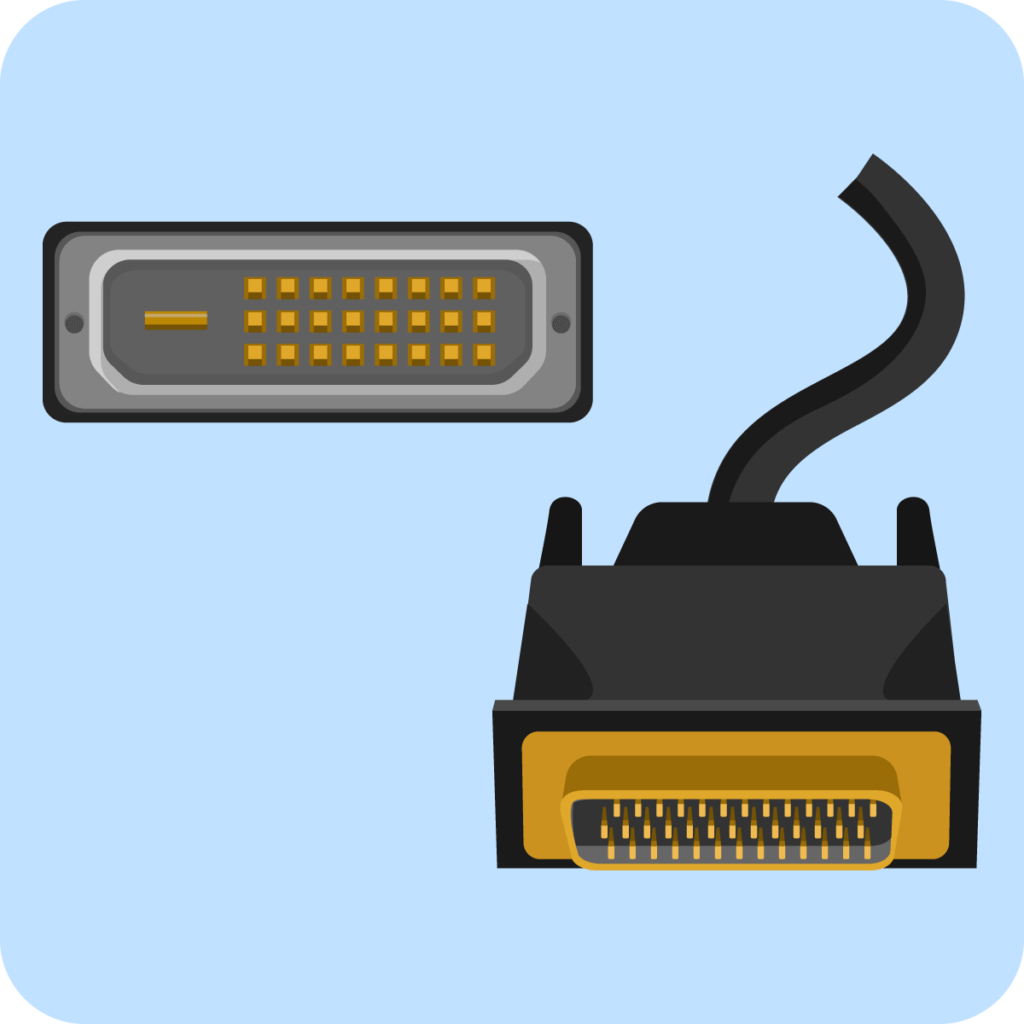
The Digital Visual Interface (DVI) is a standardised interface for transmitting image signals from a graphics card to a monitor. It replaced the old, analogue VGA interface. One disadvantage is that audio signals cannot be transmitted. Therefore, the DVI interface is gradually being replaced by the newer DisplayPort.
HDMI: The all-rounder
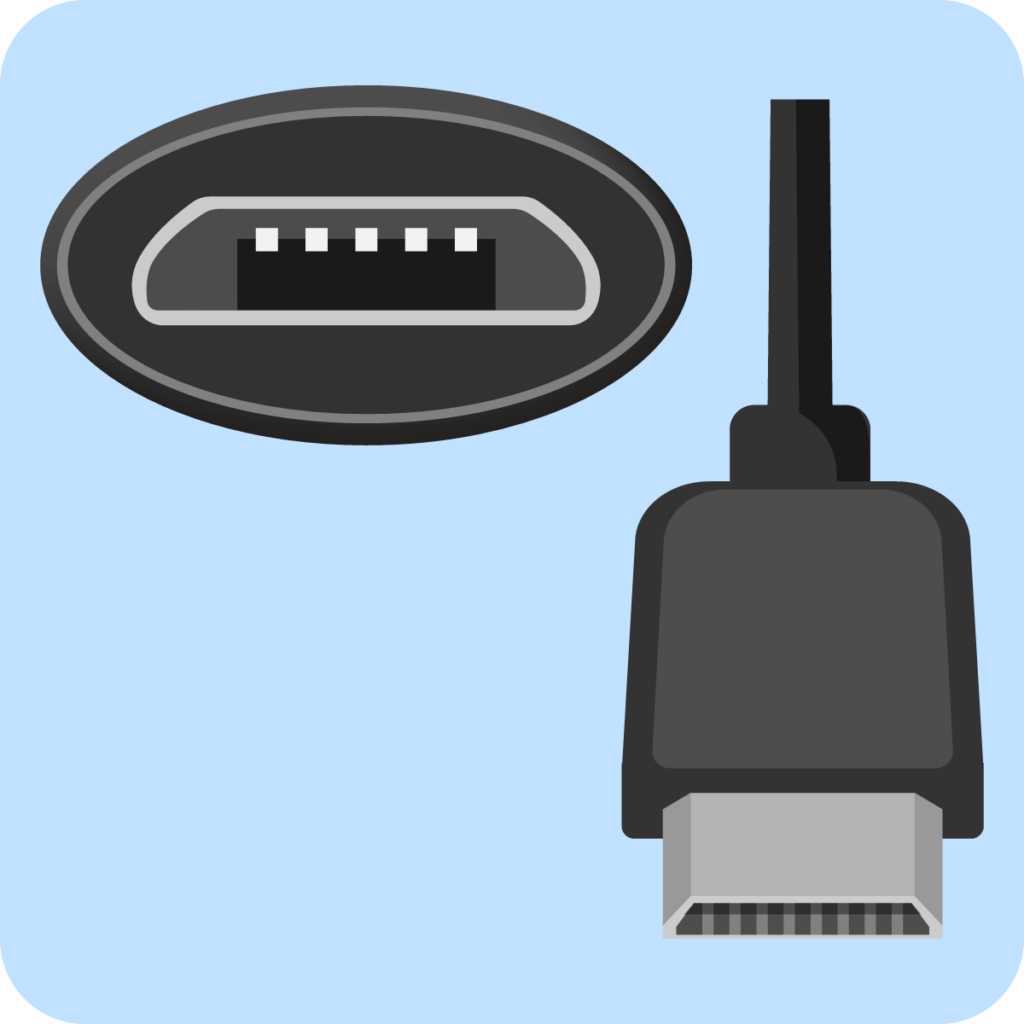
The High Definition Multimedia Interface transmits both image and audio signals in high quality. HDMI cables have become the standard for connections between PCs, gaming consoles, mobile devices and televisions. There are different sizes to consider: there is the comparatively large, “normal” HDMI plug, but also the tiny micro-HDMI plug.
DisplayPort: new standard for image and sound transmission
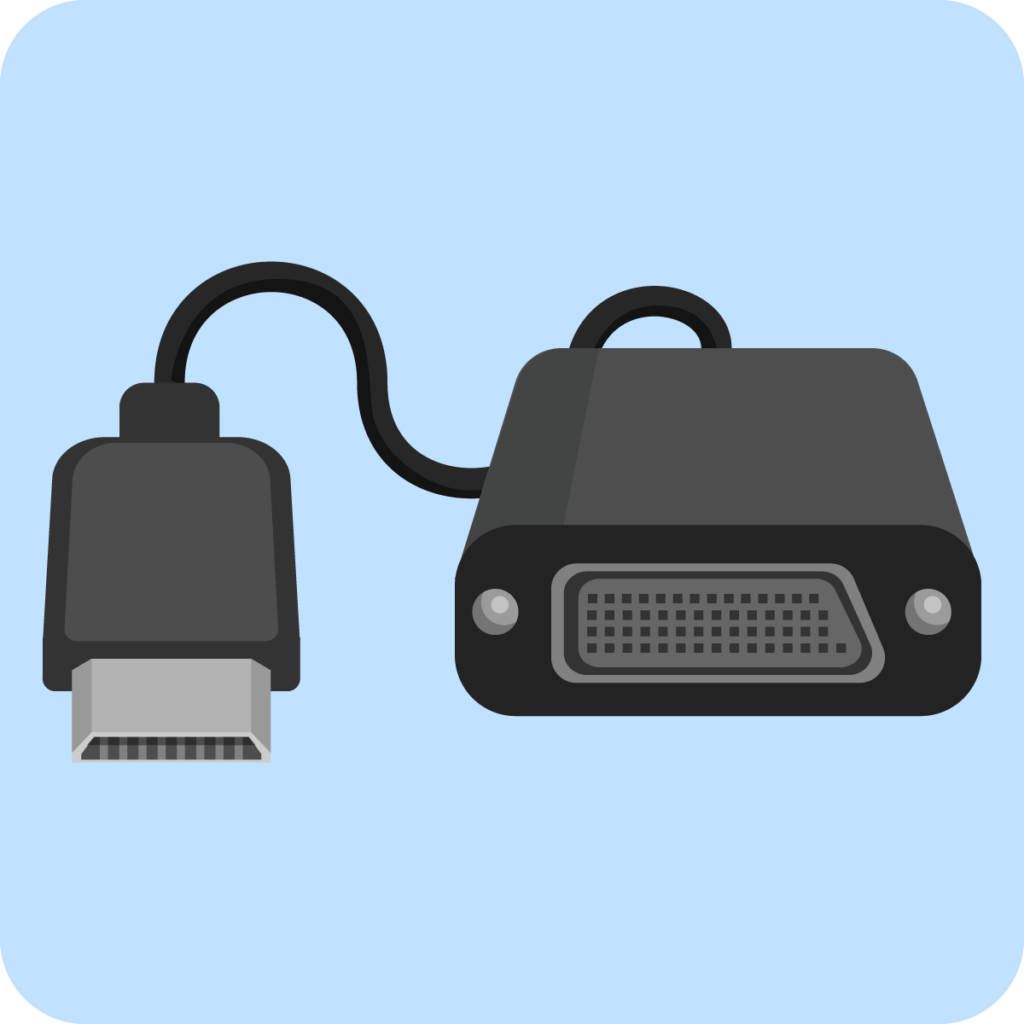
DisplayPort is a fairly new standard for transmitting image signals from a computer or laptop to a monitor. The advantage is that free channels in the cable can be configured for different purposes. As a rule, they are used for audio transmission. However, uses such as USB-C functionality for data transmission (up to 40 Gbit/s) are also possible.
USB 3.1: widely used all-rounder
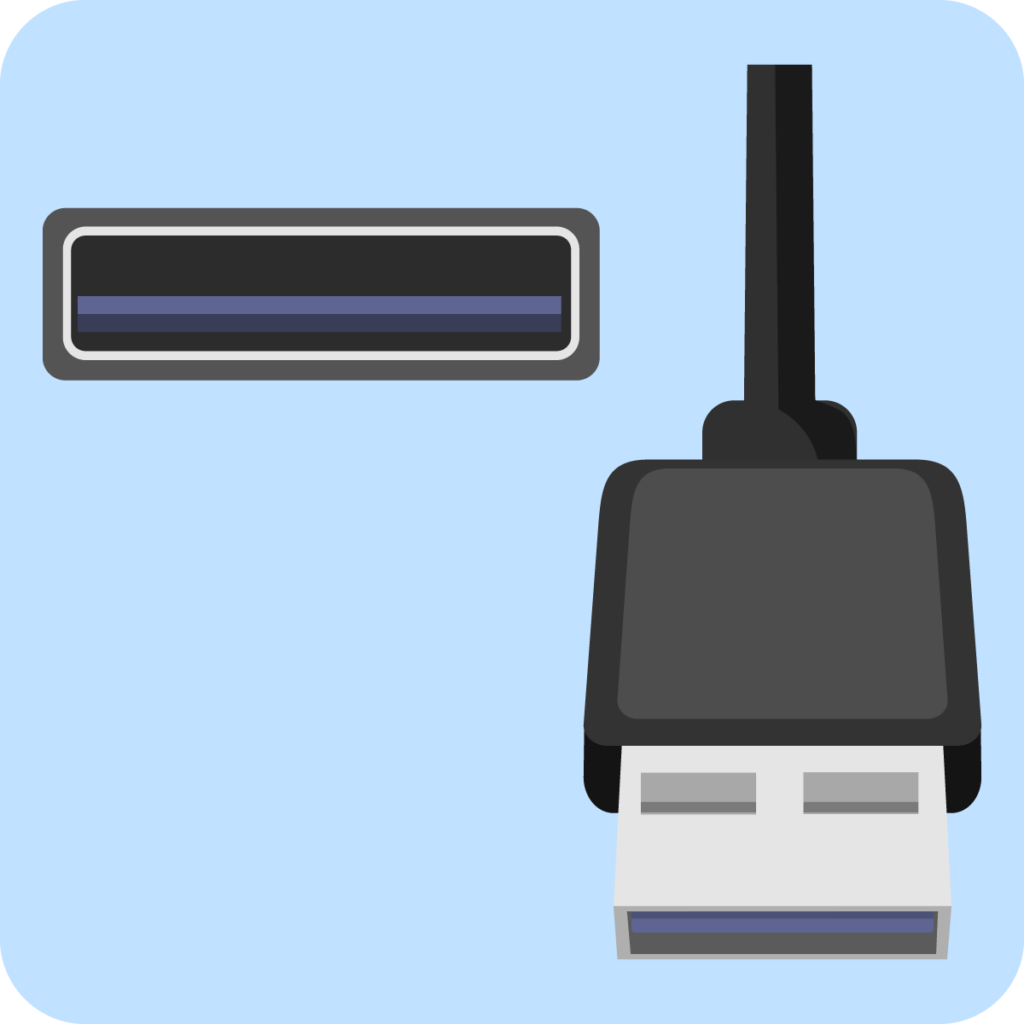
The blue-coloured USB sockets indicate the fast data transfer standard 3.1. These ports are downward compatible, so they can also be used with older USB sticks that only support the slower 2.0 standard. There should be at least four of these ports, but preferably six or eight, so that as many peripherals as possible, such as mice, keyboards, printers, 3D printers or webcams, can find a slot.
3.5 millimetre jack: traditional audio transmission

The analogue jack connection is still widely used. Gamers can connect speakers and headphones to the gaming computer via this interface. However, it is associated with certain losses in quality. If there are several of these jack connections, the interface is suitable for connection to a 5.1 sound system, for example.
TOSLINK: digital audio transmission
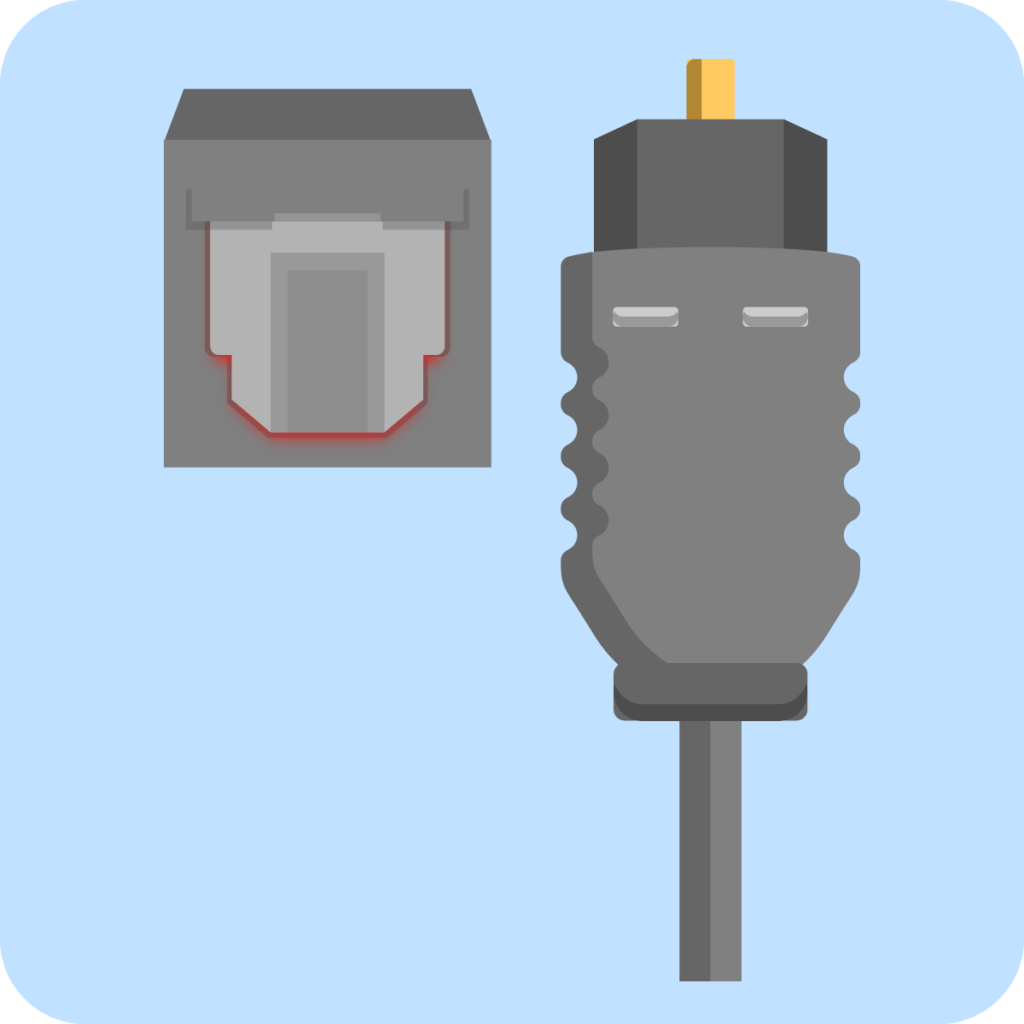
Unlike the 3.5-millimetre jack, which is slowly becoming obsolete and is becoming increasingly rare, especially in mobile devices, the TOSLINK interface ensures loss-free digital audio signal transmission.
Ethernet interface: wired Internet connection
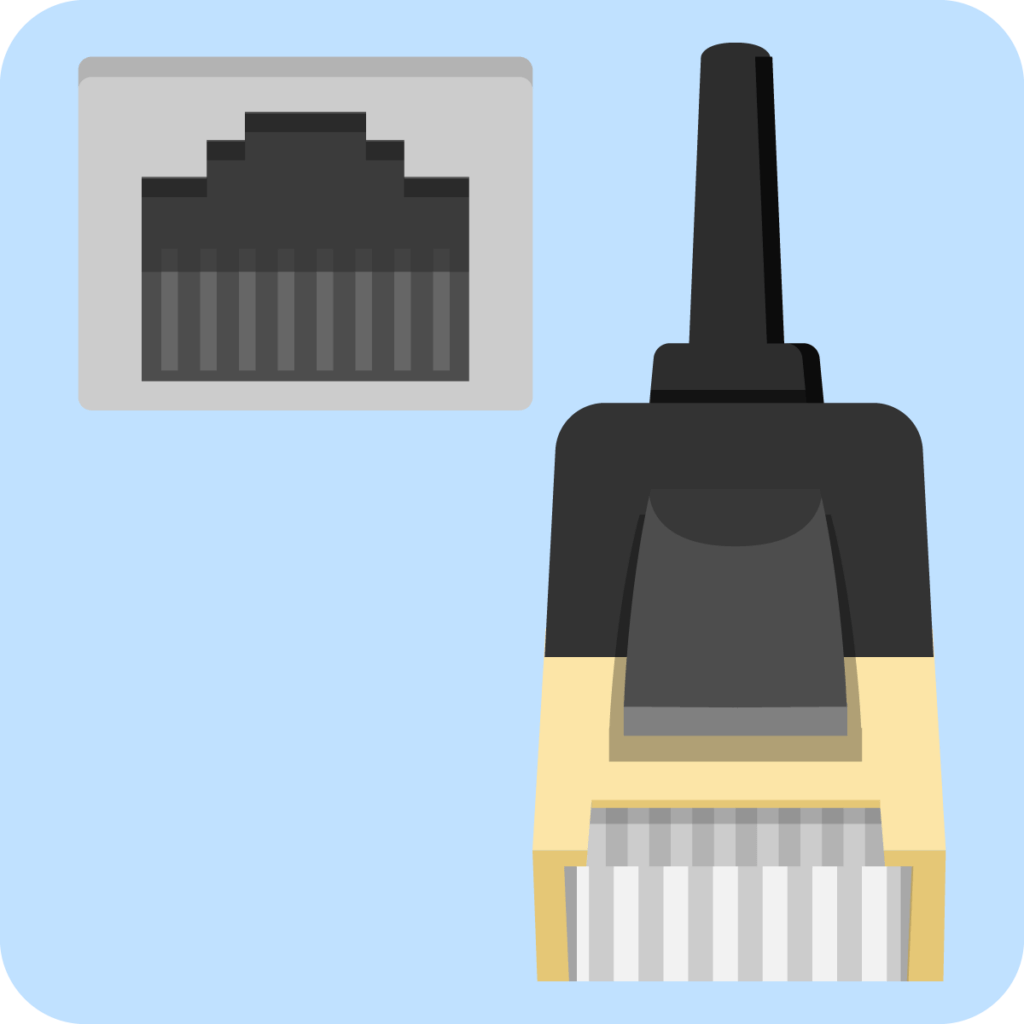
The Ethernet interface enables the connection of a LAN cable to the computer. In this way, users can establish a wired internet connection that is less susceptible to interference and particularly fast. For most gamers, a wireless connection via WLAN is out of the question due to speed losses and higher ping times. It should be a modern gigabit LAN interface with a maximum data rate of 1,000 Mbps.
Buying advice – finding the right gaming PC
How powerful the individual components of a gaming PC should be depends on the type of user. Of course, the highest graphics settings are a dream for all gamers, but the high prices for the potent hardware required for this force the majority of interested parties to compromise on performance, resulting in different target groups.
In general, one can anticipate the following: The graphics card is the “heart” of a gaming PC. Gamers who are putting together a new gaming PC should allow it a third of the total price of the PC. If the total budget for a new gaming PC is 1,500 euros, for example, then the graphics card can take 500 euros of that, and those interested in buying should plan the remaining 1,000 euros for the other components.
Browser gamers: lower three-digit euro range
Prospective buyers who like to play browser games like Mah-Jongg, Candy Crush or FarmVille exclusively do not need a high-priced computer with special performance features. A relatively simple PC in the lower price range is sufficient. However, a reasonable graphics chip or a mid-range graphics card should be sufficient to enable smooth graphics. For this reason, users who only play online games are not, strictly speaking, among the buyers of a gaming PC.
Casual gamers and the price-conscious: 400 to 750 euros
This category includes gaming beginners and users who want or have to pay attention to the price. Fans of simple simulation games, for example, such as a farming simulator, also get their money’s worth in this price range. Since they do not have huge expectations of the graphical presentation of their game titles, it is also not necessary to upgrade their systems at regular intervals by installing new components. Of course, users also do all their office work on these computers. When deciding on such a system, there is a risk that gamers will buy a computer with which they are currently satisfied, but which will also become outdated very quickly.
For this target group, the Intel processors of the i3 and i5 series or AMD’s FX models are ideal. In terms of graphics, a card from the Radeon R5 series or the GeForce 1030 series can provide the necessary computing power. For such a system, we also recommend a RAM of eight gigabytes and a terabyte of HDD hard drive storage, which offers enough space for all applications and games.
Regular gamers with high demands: 750 to 2,000 euros
For users in this category, a current processor from the i5 to i7 or Ryzen 5 to Ryzen 7 series is recommended. In terms of graphics performance, it may be a card that is roughly in the performance range of a GeForce 1660 Ti or Radeon RX 590. It goes without saying that this range extends both upwards and downwards and that a significantly more powerful GeForce 2070 can also be considered. Current adventure titles can also be played with such a system. However, compromises have to be made with the graphics settings. Thus, the card still performs a smooth picture at the detail level “high”, but is overtaxed at “very high” or “ultra”. Furthermore, gamers in this segment give their computer at best 16 gigabytes of RAM and a hybrid storage with about 2 terabytes of HDD and 100 gigabytes of SSD.
Owners of such gaming PCs enjoy games in full HD resolution in combination with a monitor of about 24 inches in size. But these models can do much more: creative work that requires comparatively high computing power, such as image and video editing, is no problem with such a system. Such a computer is also up to date for several years and can provide a lot of pleasure when playing the latest game titles.
High-end gamers: from 2,000 euros upwards
This type of gamer system is suitable for a comparatively small group of enthusiasts for whom 4K graphics at the highest level of detail in the game settings are important. They do not want to accept any performance losses. That is why they also accept very high acquisition costs. They have monitors that are around 28 inches in size. Widescreen monitors are also popular, and they can even reach the four-digit euro mark in purchase price. Some users engage in professional e-sports and play in a league.
The processor needs a correspondingly high performance: if it is from Intel, it must be a modern i7 or even i9 processor. With AMD, only the new Ryzen 7 or Threadripper models come into question. The graphics performance is provided by an Nvidia GeForce GTX 1080 Ti, a GeForce RTX 2080 Ti or an AMD Radeon Pro Vega 16 GB, for example. These high-end graphics cards alone cost between 500 and 2,000 euros – depending on the equipment. Some particularly demanding gamers treat themselves to two graphics cards in a so-called SLI array in their computer. Their computing power is extremely high, but sometimes individual game titles have problems recognising or utilising SLI combination graphics cards: in this case, a RAM with 32, or better, 64 gigabytes of memory is appropriate. Hybrid memory with up to 6 terabytes total capacity ensures that there is never a shortage of memory.
Useful accessories for gamers
Users can choose from a wide portfolio of accessories to make the gaming experience all-round special. We list a few ideas.
Gaming keyboard: robust and with special functions
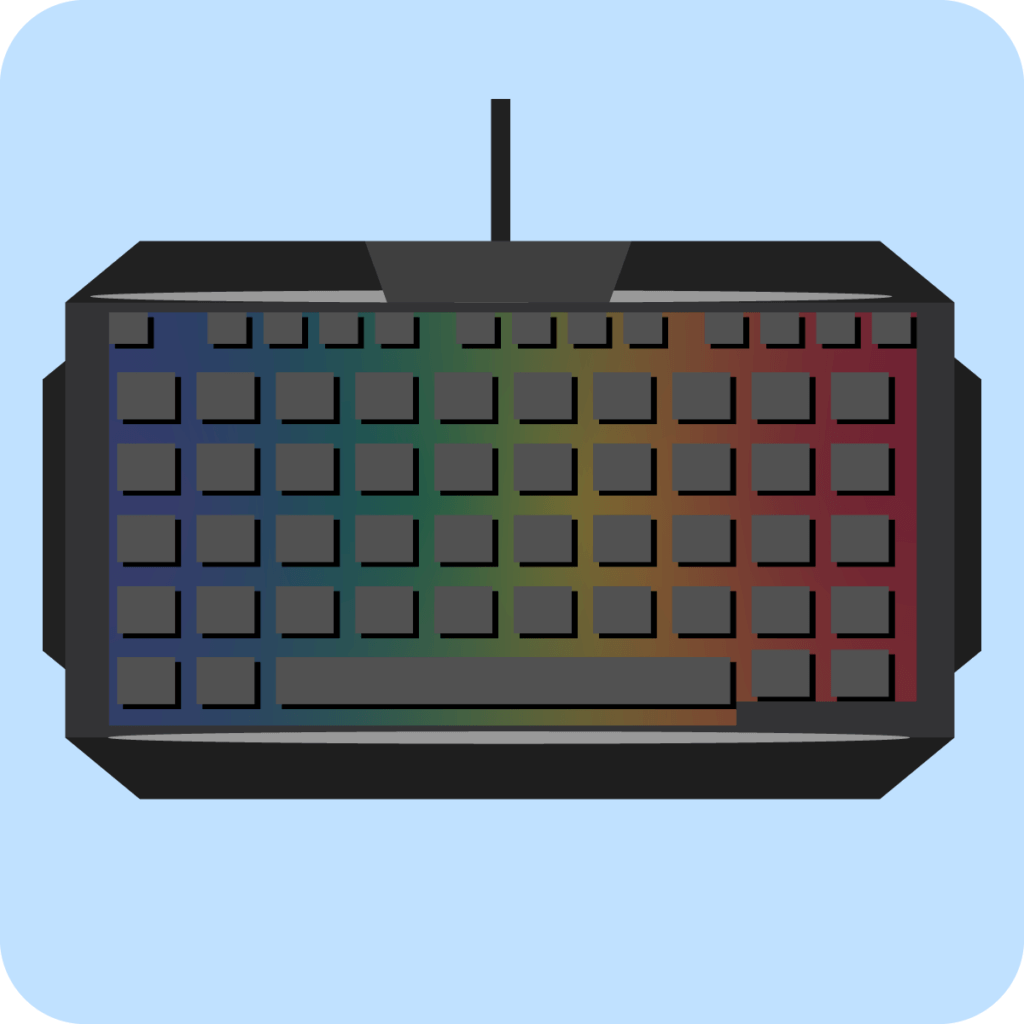
Gaming keyboards are characterised by their special robustness. They often come with additional ergonomic functions such as backlighting, USB interfaces or special keys that are either preset or can be individually configured by the user.
Gaming mouse: high sampling rate and additional buttons
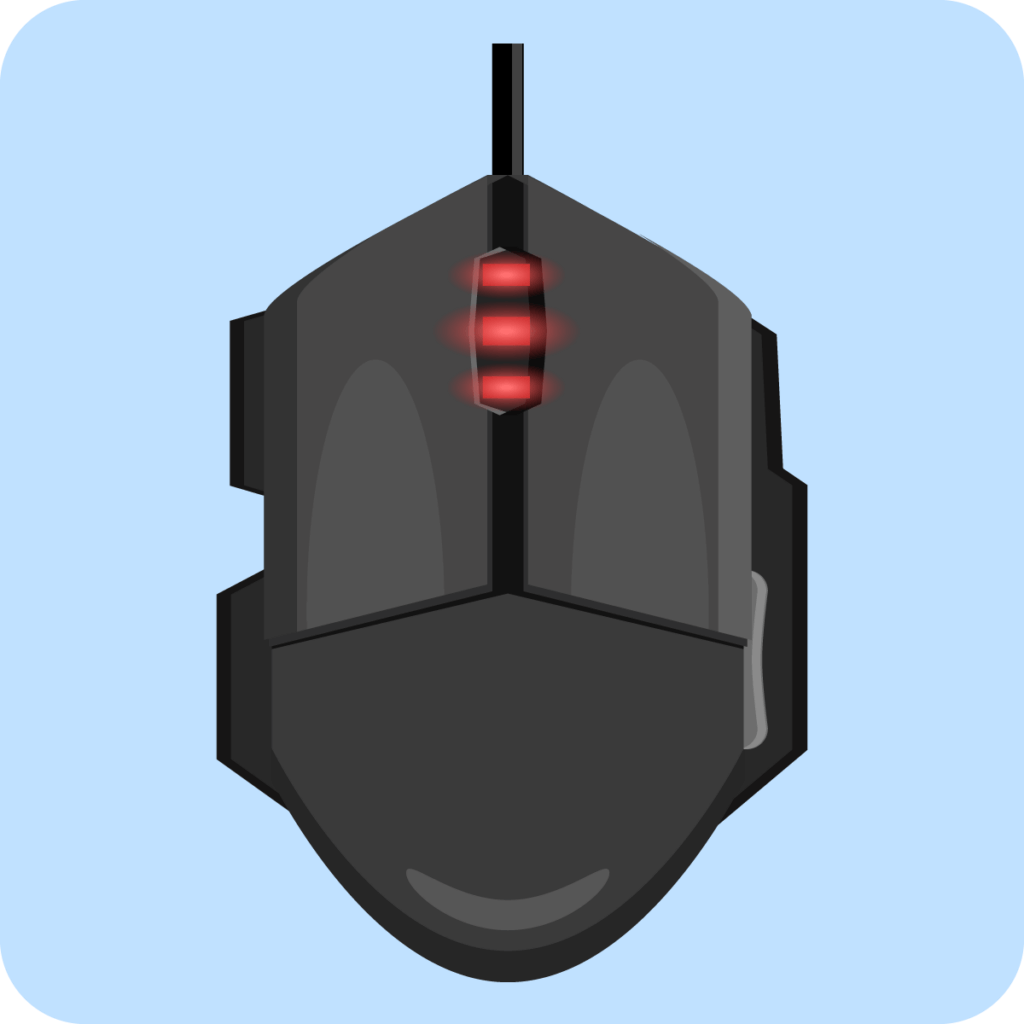
A gaming mouse is essentially characterised by a high sampling rate of the optical sensor. The very precise targeting achieved in this way provides a decisive advantage in many computer games. With the additional buttons, users can lower or increase the sampling rate as needed so that the mouse pointer on the screen reacts sluggishly or sensitively to the player’s hand movements if desired.
Gamepads: console feeling on the computer
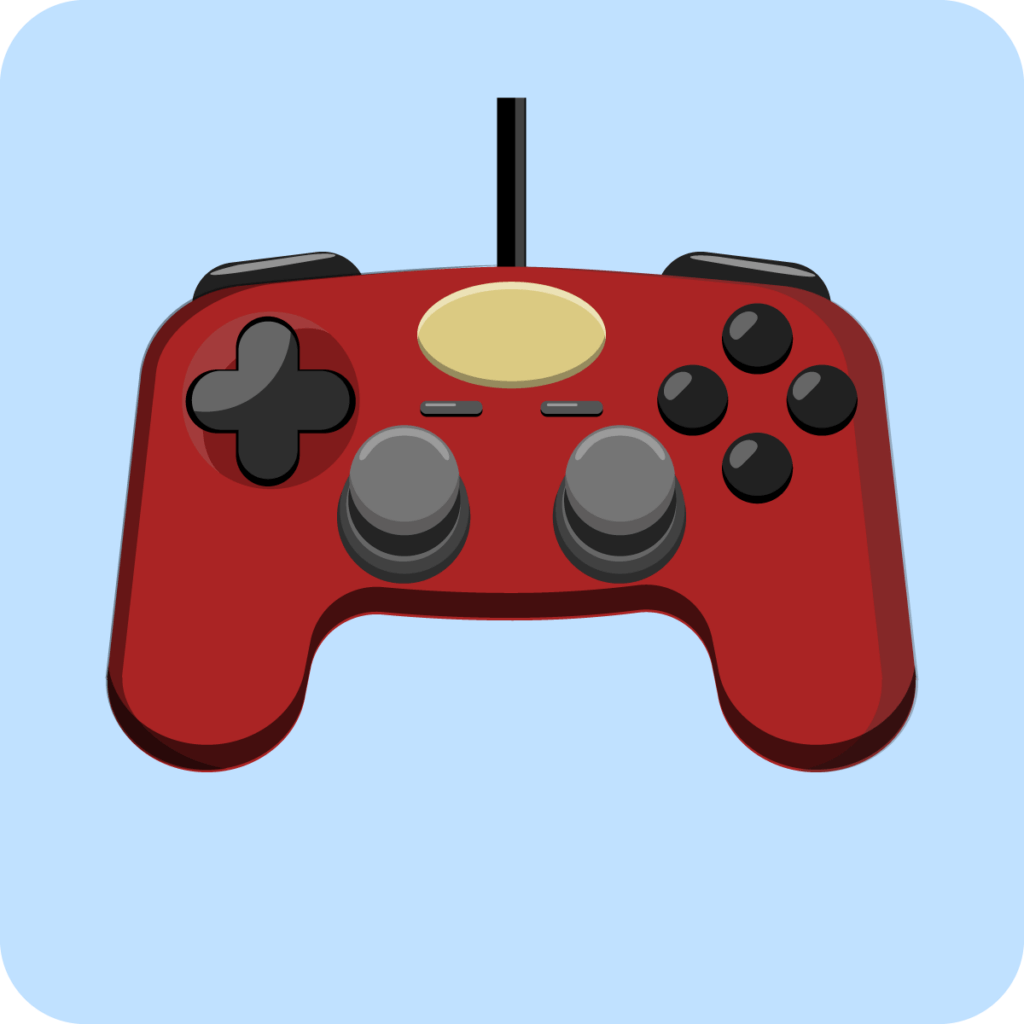
Anyone who has ever gambled on a game console knows the incomparable gaming experience that comes from this type of control. In many action-adventure games, the binary movement commands of keyboards are not sufficient for natural-feeling movement, for example when changing from slow, careful movement speed to normal or fast movement speed – the arrow keys of keyboards only offer the options “press key – go” and “release key – do not go”. In addition, many titles released on the PC are first and foremost optimised for the mass market of consoles, so developers don’t try too hard to make keyboard controls make sense. In addition, many players quickly get lost on the keyboard in games with extensive key assignments, so that the controls do not feel intuitive – the ergonomics and tidiness of a gamepad is associated with far fewer incorrect keystrokes for most players, even in the case of multiple key assignments. A classic example of a game that makes a gamepad indispensable on a gaming PC is the famous football simulation FIFA. With gamepads, several players compete against each other for exciting games – whether with friends on the sofa or online against other players worldwide.
Monitor: don’t draw streaks!

A good monitor with a fast refresh rate is important for a true-colour gaming experience. The choice of whether the monitor should support Full HD or even 4K resolutions depends on the type of gaming computer and the gamer’s wishes and budget. Special curved monitors convey a particularly wide field of vision and thus the feeling of being in the middle of the action. Especially in shooters, a fast response time is crucial.
Bürostuhl: die richtige Sitzposition ist entscheidend

Sitting on an unsuitable chair for a long time is not only uncomfortable, it also damages the back if the wrong stress is continuously applied. A back-friendly chair with lumbar support ensures users a discomfort-free sitting position over longer periods of use. Models with a modern design are also marketed as gaming chairs or gaming armchairs. These are outwardly very similar to seats of racing cars. Even with a good gaming chair, however, you should pay attention to your sitting posture. The chairs cannot straighten a crooked back.
Sound reproduction: loudspeaker or headset

Computer gaming without sound is unthinkable. The range of speaker systems starts with the classic two-way speakers with or without subwoofer and extends to 5.1 and 7.1 systems and large smart home systems connected to the home network and spanning several rooms. For users who need to be considerate of roommates or neighbours, a variety of headphone and headset solutions are available. This solution offers even more advantages: excellent directional surround sound, precise enemy location in competitive shooters and the possibility of voice chat via integrated microphone.
Alternatives to ready-assembled gaming PCs
In addition to the option of purchasing a fully assembled and installed gaming computer, interested parties have the option of specifically assembling individual components and installing them themselves. The purchase of a gaming laptop is also an alternative worth considering for some end users. We look at the individual options.
Assembling a computer yourself: a cost-saving option
Those who do not buy their PC ready-made but select, order and assemble all the components themselves usually save a lot of money compared to buying the whole thing. Users can buy the desired components cheaply from various suppliers. However, this requires both manual dexterity and a minimum of technical expertise. Users must be careful when installing the components so that they do not damage them. They must also find out in advance whether the components harmonise with each other and do not slow each other down.
Furthermore, if a system does not run smoothly or does not start at all, there is no guarantee or warranty. Both are limited to the functioning of the individual parts, but not to the stability of the system as such. In that case, users would either have to get help from a third party, possibly even from a specialist shop for a fee. Thus, a computer kit is rather recommended to experienced computer users.
Pro points
- Usually cheaper to purchase
Drawbacks
- Components can be damaged during assembly
- Computer may not function properly after assembly
- Components that do not harmonise can lead to bottleneck phenomenon
- A kit is not immediately ready for use
Pure “users” who do not want to deal with the technology, as well as beginners, are therefore better off with a complete system. Here everything is pre-assembled and in many cases the operating system is already pre-installed. The gaming computer is then immediately ready for use.
Gaming laptop: mobile high-end gaming experience
In principle, a gaming laptop can do exactly the same as a desktop PC. However, it may be more cumbersome to operate. The big advantage: users are not tied to one location, mobile gaming and working is possible everywhere. A major disadvantage is that buyers have to dig much deeper into their pockets if they want to get the same performance as the desktop variant. The more compact components are incomparably more expensive. In addition, a laptop with its limited space is more difficult to upgrade.
Pro points
- Flexible in the choice of location
Drawbacks
- Powerful components more expensive than desktop systems
- External input devices may be necessary for comfortable operation
- Few options for upgrading
After the purchase – care and maintenance
Over time, dust accumulates inside the computer and is transported into the interior via the case fans. This can lead to component wear, ventilation path blockage and, as a result, increased heat generation. You can tackle these contaminants by shutting down the computer, unplugging the power cord, opening the case and carefully vacuuming dirty areas with a hoover brush attachment. Take great care to secure or remove loose components, otherwise they could suddenly disappear into the suction pipe. If necessary, also reduce the suction power. Fine brushes or an air pressure spray further improve the result. An annual cleaning, for example as part of spring cleaning, is already enough to keep the PC in good shape.
Another type of spring cleaning you should do as a user of a gaming PC is software-based: Always keep system and graphics card drivers up to date. As a rule, the software of graphics cards will notify you as soon as an update is ready for installation. However, you can also check manually on the manufacturer’s website. In addition, practical shortcuts are arranged in many graphics card software, which start the update process when clicked. Using the latest version of the graphics card driver reduces the risk of errors and system crashes. In addition, graphics card manufacturers develop specially optimised driver versions for many new major game releases to ensure that these titles can be played as smoothly as possible. Updating the operating system and anti-virus software prevents the computer from being compromised by malware and data from being stolen or encrypted. Gaming would then also no longer be possible in many cases.

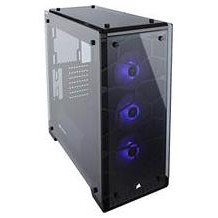
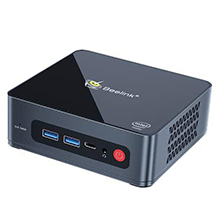
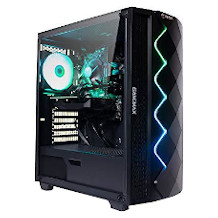
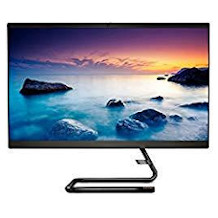
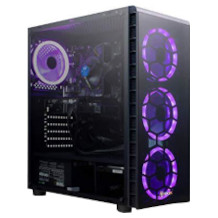
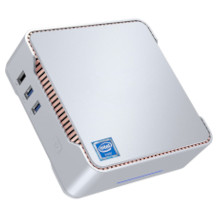

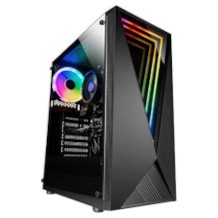
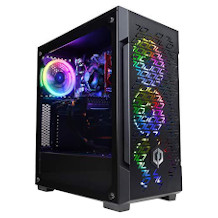
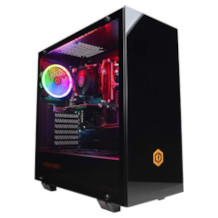
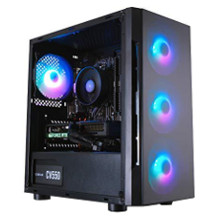
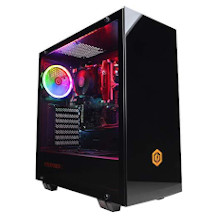
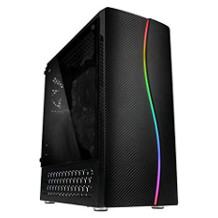
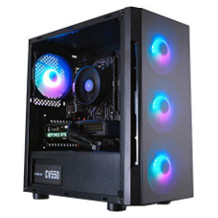
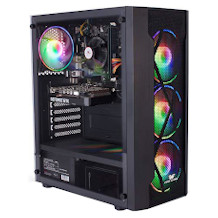
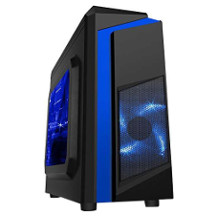
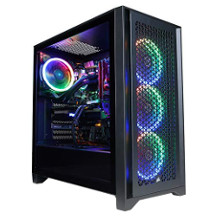

 1,214 reviews
1,214 reviews